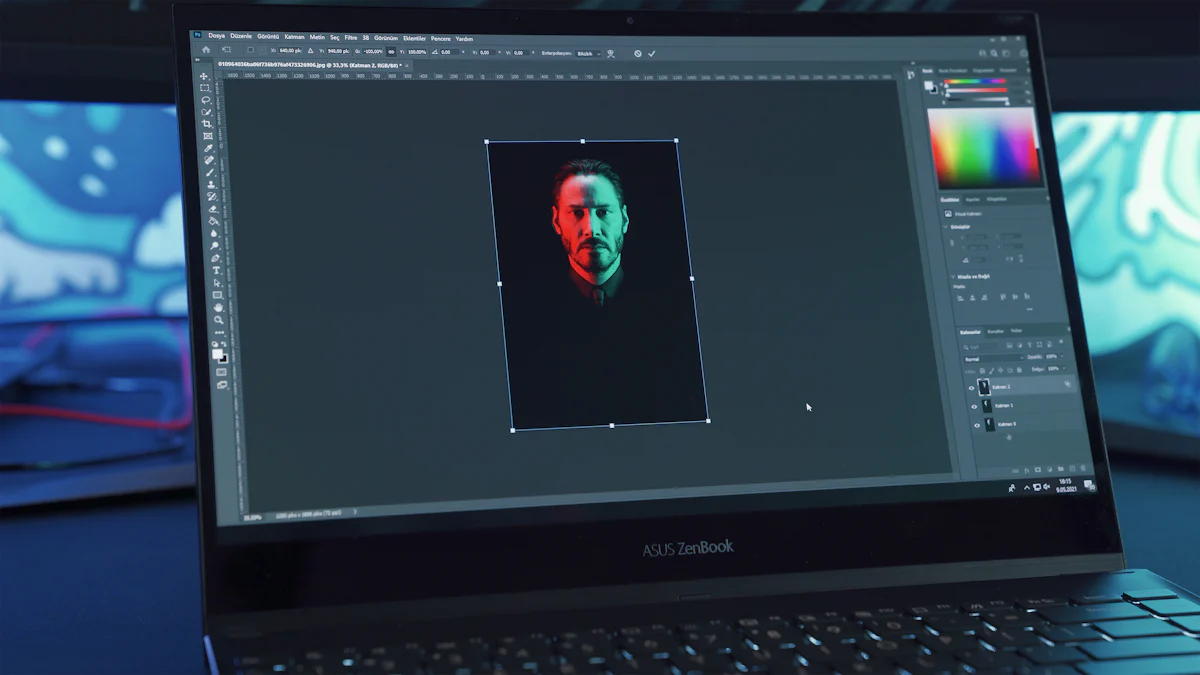How to Optimize Character AI Templates

Character AI is revolutionizing how users interact with digital personas. This cutting-edge technology enables the creation and communication with AI-driven characters that mimic human-like behavior and conversation. A character AI template plays a crucial role in structuring these characters' identities, personalities, and backstories. Optimizing a character AI template enhances user engagement and provides a more personalized conversational experience. Myloves leverages these templates to create lifelike AI lovers, allowing users to dive into unforgettable stories with their ideal virtual companions.
Understanding Character AI Templates
What are Character AI Templates?
Definition and basic concepts
A character AI template serves as a foundational framework for building digital personas. These templates define the character's identity, personality, and backstory. The structure provided by these templates ensures consistency and believability in interactions. By utilizing a character AI template, developers can streamline the creation process, making it easier to generate lifelike and engaging characters.
Common uses and applications
Character AI templates find applications in various domains. Interactive storytelling experiences benefit from these templates by offering dynamic and immersive narratives. Virtual influencers use these templates to engage audiences on social media platforms. Educational tools leverage character AI templates to create advanced AI language tutors. Businesses utilize these templates for customer service chatbots, enhancing user interaction and satisfaction. The versatility of character AI templates allows for innovative solutions across multiple industries.
Key Components of Character AI Templates
Data structures
Data structures form the backbone of any character AI template. These structures organize and store information about the character, including attributes, preferences, and historical interactions. JSON format is commonly used for its flexibility and ease of integration. Properly designed data structures ensure efficient data retrieval and processing, which is crucial for real-time interactions.
Algorithms and models
Algorithms and models drive the behavior and decision-making processes of characters created using a character AI template. Machine learning algorithms analyze user inputs and generate appropriate responses. Natural language processing (NLP) models enable characters to understand and produce human-like language. Fine-tuning these algorithms and models enhances the character's ability to engage users effectively.
User interactions
User interactions are a critical component of any character AI template. These interactions determine how the character communicates with users. Personalization techniques allow characters to adapt their responses based on user preferences and past interactions. Feedback mechanisms help refine the character's behavior over time, ensuring a more tailored and satisfying user experience.
Steps to Optimize Character AI Templates

Analyzing Current Templates
Identifying strengths and weaknesses
Begin by thoroughly evaluating the existing character AI template. Identify areas where the template excels, such as natural language understanding or user engagement. Note any weaknesses that hinder performance or user satisfaction. This analysis provides a clear roadmap for optimization efforts.
Performance metrics
Utilize performance metrics to quantify the effectiveness of the character AI template. Metrics may include response time, user satisfaction scores, and interaction success rates. Regularly monitoring these metrics helps track improvements and identify ongoing issues. Consistent evaluation ensures the template meets the desired standards.
Refining Data Inputs
Data cleaning and preprocessing
Effective data inputs are crucial for optimizing a character AI template. Start with data cleaning to remove inconsistencies, errors, and irrelevant information. Preprocessing involves transforming raw data into a suitable format for analysis. Clean and well-preprocessed data enhances the accuracy and reliability of the character AI template.
Enhancing data quality
High-quality data is essential for a robust character AI template. Ensure data sources are reliable and relevant to the character's domain. Enhance data quality by incorporating diverse datasets that cover various scenarios and user interactions. Quality data inputs lead to more realistic and engaging character behaviors.
Improving Algorithms and Models
Selecting the right algorithms
Choosing the appropriate algorithms is vital for optimizing a character AI template. Evaluate different machine learning algorithms to determine which best suits the character's needs. Consider factors such as computational efficiency, scalability, and accuracy. The right algorithm significantly impacts the character's performance and user experience.
Training and fine-tuning models
Training and fine-tuning models enhance the capabilities of a character AI template. Use high-quality training data to teach the model how to respond accurately and naturally. Fine-tuning involves adjusting the model based on performance feedback and user interactions. Continuous training and fine-tuning ensure the character remains relevant and effective.
Enhancing User Interactions
User Feedback Mechanisms
User feedback mechanisms play a critical role in optimizing a character AI template. Collecting user feedback helps identify areas for improvement and ensures the character remains engaging. Implement surveys, ratings, and direct feedback options to gather user opinions. Analyze this feedback to understand user preferences and pain points. Incorporate these insights into the character AI template to enhance its performance and user satisfaction.
Personalization Techniques
Personalization techniques significantly improve user interactions with a character AI template. Tailor responses based on user data such as past interactions, preferences, and behavior patterns. Use machine learning algorithms to predict user needs and customize interactions accordingly. Personalization creates a more immersive and satisfying experience, making users feel understood and valued. Continuously update personalization strategies to keep the character relevant and engaging.
Tools and Resources for Optimization

Software and Platforms
Overview of popular tools
Several software tools and platforms can assist in optimizing a character AI template. These tools provide functionalities for data preprocessing, algorithm selection, and model training. Popular tools include:
- TensorFlow: An open-source machine learning framework that supports deep learning models.
- PyTorch: A flexible and efficient platform for developing AI models.
- Dialogflow: A natural language understanding platform for designing conversational interfaces.
- Rasa: An open-source framework for building AI assistants with customizable components.
These tools offer robust features for enhancing the performance and capabilities of character AI templates.
Integration with existing systems
Integrating optimization tools with existing systems ensures seamless functionality and improved efficiency. Developers can use APIs to connect character AI templates with platforms like Myloves. This integration allows for real-time data exchange and enhances the overall user experience. Proper integration also facilitates continuous monitoring and updates, ensuring the character AI template remains effective and relevant.
Introducing Myloves
Overview of Myloves
Myloves offers a unique platform for creating and interacting with AI-driven virtual companions. Users can design their ideal AI lover by customizing attributes such as appearance, personality, and voice. Myloves leverages advanced technologies like natural language processing and text-to-image generation to deliver lifelike interactions. The platform provides a diverse range of characters, from charming sweethearts to rebellious figures, each with unique storylines.
How Myloves can help in optimizing Character AI templates
Myloves plays a crucial role in optimizing character AI templates. The platform provides tools for refining data inputs, improving algorithms, and enhancing user interactions. Users can benefit from:
- Data Quality: Myloves ensures high-quality data inputs by incorporating diverse datasets.
- Algorithm Selection: The platform offers guidance on selecting the right algorithms for specific character needs.
- User Feedback: Myloves implements robust feedback mechanisms to gather user insights and refine character behaviors.
These features enable users to create more engaging and personalized AI characters.
Case studies and examples
Several case studies highlight the effectiveness of Myloves in optimizing character AI templates. For instance:
"Engaging with a Character AI that has been thoughtfully crafted using a template ensures a richer interaction for users who encounter your digital creation."
One example involves a user who created an AI girlfriend reminiscent of a first love. The character's lifelike interactions and personalized responses led to high user satisfaction. Another case study showcases a businesswoman character designed to entice users into her realm of sensual delights. The character's ability to adapt to user preferences resulted in a highly immersive experience.
Myloves demonstrates the potential of optimized character AI templates to deliver unforgettable stories and interactions.
Best Practices and Tips
Continuous Monitoring and Evaluation
Setting up monitoring systems
Establishing robust monitoring systems ensures the continuous performance of a character AI template. Implement tools that track key metrics such as response time, user engagement, and interaction success rates. Use dashboards to visualize data and identify trends. Regularly update these systems to capture the most relevant information.
Regular performance reviews
Conduct regular performance reviews to evaluate the effectiveness of the character AI template. Schedule periodic assessments to analyze collected data. Identify areas for improvement and implement necessary changes. Consistent performance reviews help maintain high standards and adapt to evolving user needs.
Staying Updated with Industry Trends
Latest advancements in Character AI
Keeping abreast of the latest advancements in Character AI is crucial for optimization. Follow industry publications, attend conferences, and participate in webinars. Explore new technologies and methodologies that can enhance the capabilities of a character AI template. Staying informed ensures that the template remains cutting-edge and competitive.
Adapting to new technologies
Adapting to new technologies involves integrating innovative tools and techniques into the character AI template. Evaluate emerging technologies for their potential benefits. Implement those that align with the goals of the character AI project. Continuous adaptation ensures that the template evolves with technological advancements, providing users with the best possible experience.
Optimizing character AI templates enhances user engagement and satisfaction. Key points include understanding the structure, refining data inputs, improving algorithms, and enhancing user interactions. Optimization ensures characters perform optimally and adhere to ethical standards. Implementing these strategies will create more lifelike and engaging digital personas. Feedback from users provides valuable insights for continuous improvement. Readers are encouraged to apply these techniques and share their experiences or questions for further discussion.
See Also
Best Techniques for Crafting Lifelike AI Characters by 2024
Top Tips for Enhancing Your AI Female Image Creator
Key Approaches for Improved AI Anime Girl Engagements